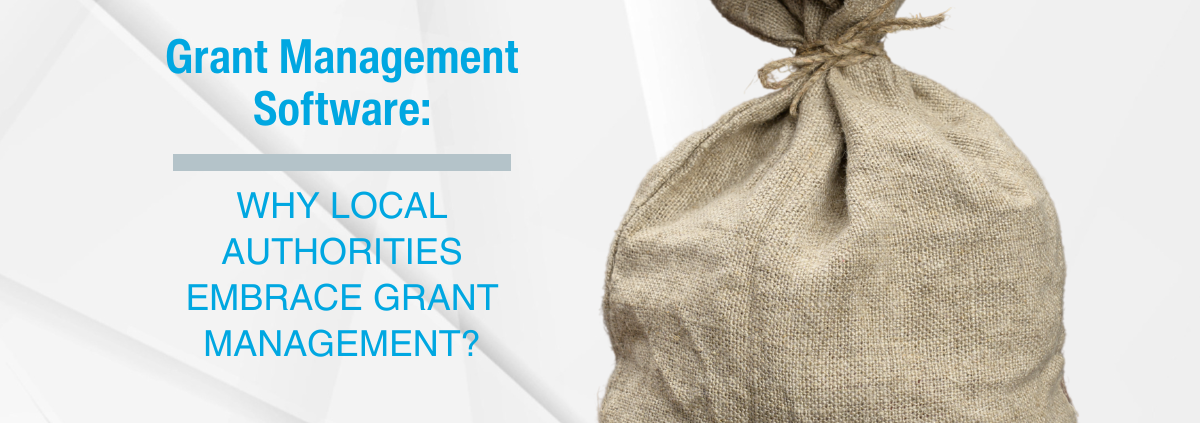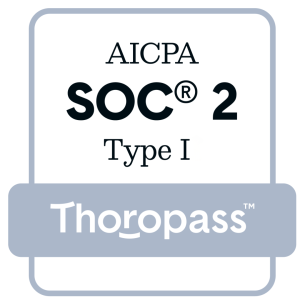Why Local Authorities Are Going Digital with Grant Management
Introduction
In an ever-evolving digital landscape, local authorities are increasingly leaning towards digital solutions to manage grants effectively. This transition is key to ensuring resources are allocated efficiently and transparently to grantees. The adoption of digital grant management systems marks a significant shift, responding to both technological advancements and the pressing need for streamlined operations in the public sector.
“It’s not enough for government to just ‘keep up’ with the scale of change happening all around us. We have to understand it, use it, and shape it. And we must grasp every opportunity to drive greater value for money for the taxpayer.”
— Rt Hon Peter Kyle MP, Secretary of State for Science, Innovation and Technology
View source
Real-world implementations further demonstrate these benefits. Multiple councils across Ireland and the UK have already transformed their grant management processes with platforms like Submit.com, leading to faster approvals, improved oversight, and a seamless applicant experience. You can explore how local governments are digitizing operations in these grant management success stories and municipal-level case studies. Check out the following short summary to get an insight into how traditional methods vastly differ from digital grant management:
Traditional vs. Digital Grant Management
| Feature | Traditional Methods | Digital Grant Management |
|---|---|---|
| Application Processing Time | Manual, time-consuming (weeks) | Automated, faster (days) |
| Document Handling | Paper-based, prone to loss | Centralized, cloud-based |
| Grantee Communication | Emails/Phone Calls | Real-time updates & status tracking |
| Reporting & Compliance | Manual spreadsheets | Instant dashboards & audit trails |
| Transparency & Oversight | Limited visibility | End-to-end transparency |
The Shift to Digital Grant Management
Manual, paper-based grant management often comes with serious challenges—lengthy processing times, inconsistent data handling, and a lack of real-time visibility. As local authorities face increasing pressure to do more with less, digital transformation is no longer optional.
A strong example of this shift comes from the U.S. Department of Health and Human Services (HHS), which implemented a modernized grants management system in 2020. The result?
A 30% reduction in application processing time and a 25% boost in applicant satisfaction.
View source
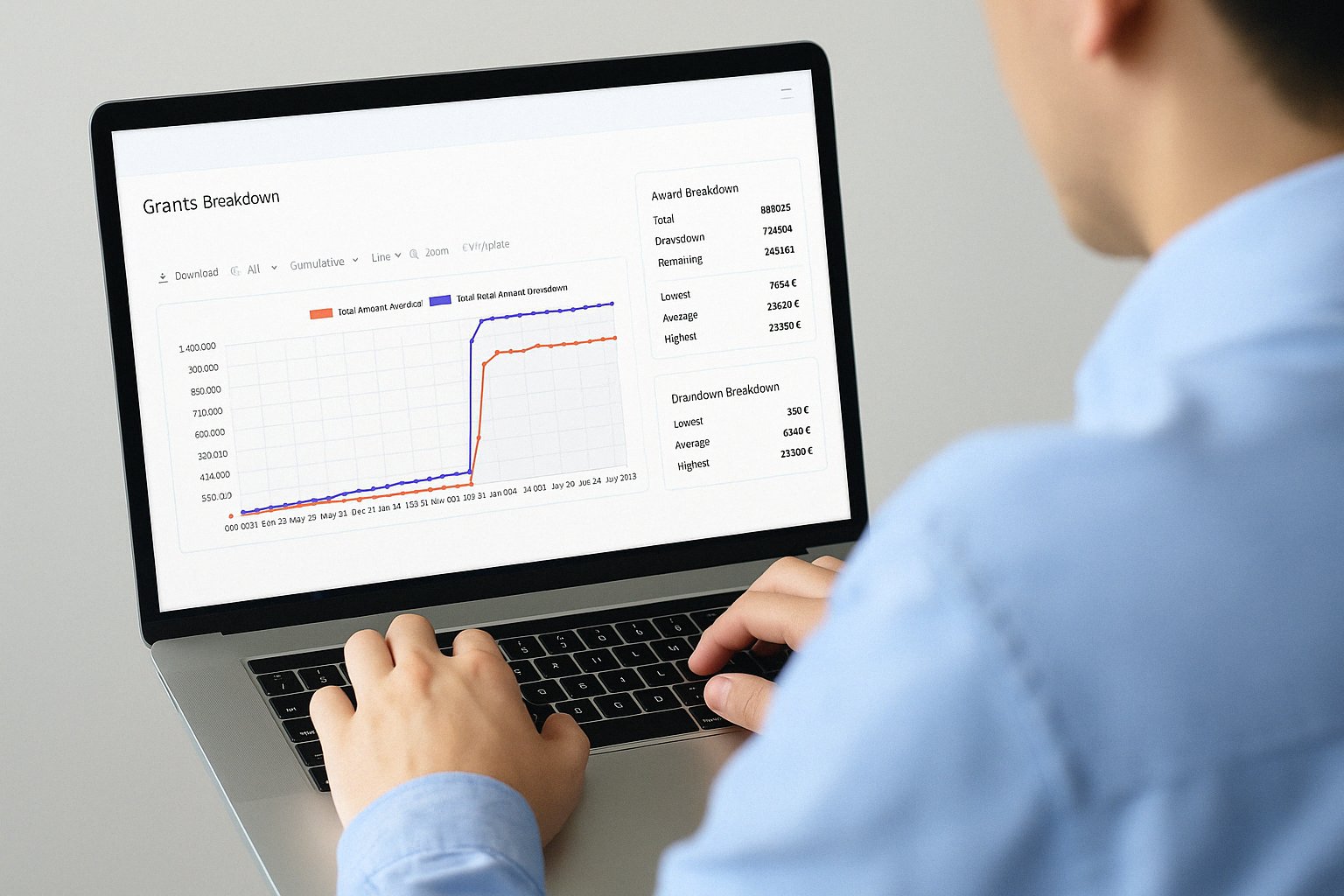
Example of a digital grant dashboard interface with award and drawdown tracking.
Manual vs. Digital Grant Processing Improvements
| Metric | Manual Process | Digital Solution |
|---|---|---|
| Application Processing Time | 4–6 weeks | Reduced by 30% (approx. 2–3 weeks) |
| Admin Time per Application | 1–2 hours | 30–50% less due to automation |
| Applicant Satisfaction Rate | Moderate (50–60%) | Increased to 75–85% |
Disclaimer: These figures are based on general industry trends, public case studies (including from Submit.com), and internal research conducted across digital transformation projects in the public sector.
Key Drivers Behind the Transition
Several critical forces are accelerating the move toward digital grant management in local government:
- Transparency and Accountability: Digital platforms offer real-time visibility into the grant lifecycle — from application to funding and reporting — helping ensure funds are used appropriately and outcomes are measurable.
- Data-Driven Decision-Making: Built-in analytics and performance dashboards enable smarter, faster funding decisions.
- Remote Work Readiness: Cloud-based grant platforms support secure, centralized access from any location — proven vital during the pandemic.
- Automation and Compliance: Digital systems reduce manual errors, speed up approvals, and ensure regulatory compliance with built-in reminders and workflows.
- Cost Efficiency: Councils reduce paper, postage, and repetitive admin tasks — saving time and money.
- Smarter Data Strategy: Unified platforms enable better interdepartmental coordination and long-term service improvement.
Case in Point: Dún Laoghaire–Rathdown County Council
Dún Laoghaire–Rathdown County Council transitioned to Submit.com to digitize its grant and funding management processes. This shift resulted in:
- Greater visibility for tracking applications
- Significant reductions in paperwork
- Faster internal approvals and communication
- Long-term cost and time savings
“By automating repetitive tasks, technology allows grant managers to focus on more strategic aspects of grants management, such as relationship-building and program development. This shift not only improves efficiency but also enhances the overall effectiveness of the grants management process.”
— Viderity, The Future of Grants Management

Infographic: Cost and efficiency benefits of digital grant management platforms.
Enhanced Efficiency and Agility
Digital grant management systems significantly enhance operational efficiency by automating repetitive tasks, reducing manual workload, and creating consistency across the grant lifecycle. These systems don’t just replace paper — they introduce speed, visibility, and accountability into the process.
Many platforms integrate with familiar tools like Microsoft Excel, Teams, and Outlook, enabling seamless application processing, review, and approval. This integration reduces turnaround times and supports real-time collaboration across departments.
The agility of digital platforms allows councils to quickly adapt to policy changes or applicant needs. With secure, remote access and centralized dashboards, decision-makers can collaborate in real time — from anywhere — using the latest data.
With features like automated workflows, task alerts, and built-in audit trails, these platforms drive consistency, transparency, and execution excellence — empowering local authorities to run their grant programs with confidence.
Here’s what Dún Laoghaire–Rathdown County Council had to say after implementing Submit.com:
“I would highly recommend Submit to anyone who needs a submission management system. As we transform our application workflows in DLR, we are still finding new uses for it.”
— Ronan Herron, Digital Strategy Officer, Dún Laoghaire–Rathdown County Council
Before vs. After: How Digital Grant Management Improves Efficiency
| Process | Manual System | With Digital Grant Management |
|---|---|---|
| Application Review | Paper-based, scattered, easy to miss steps | Centralized access, status tracking |
| Communication & Collaboration | Email threads, in-person meetings | Shared dashboards, instant updates |
| Turnaround Time | 4–6 weeks | Reduced by up to 30–40% |
| Compliance Tracking | Manual spreadsheets, prone to errors | Automated alerts and audit-ready logs |
| Remote Access | Not feasible | 100% secure cloud access |
Note: These benchmarks reflect industry trends and Submit.com client insights.
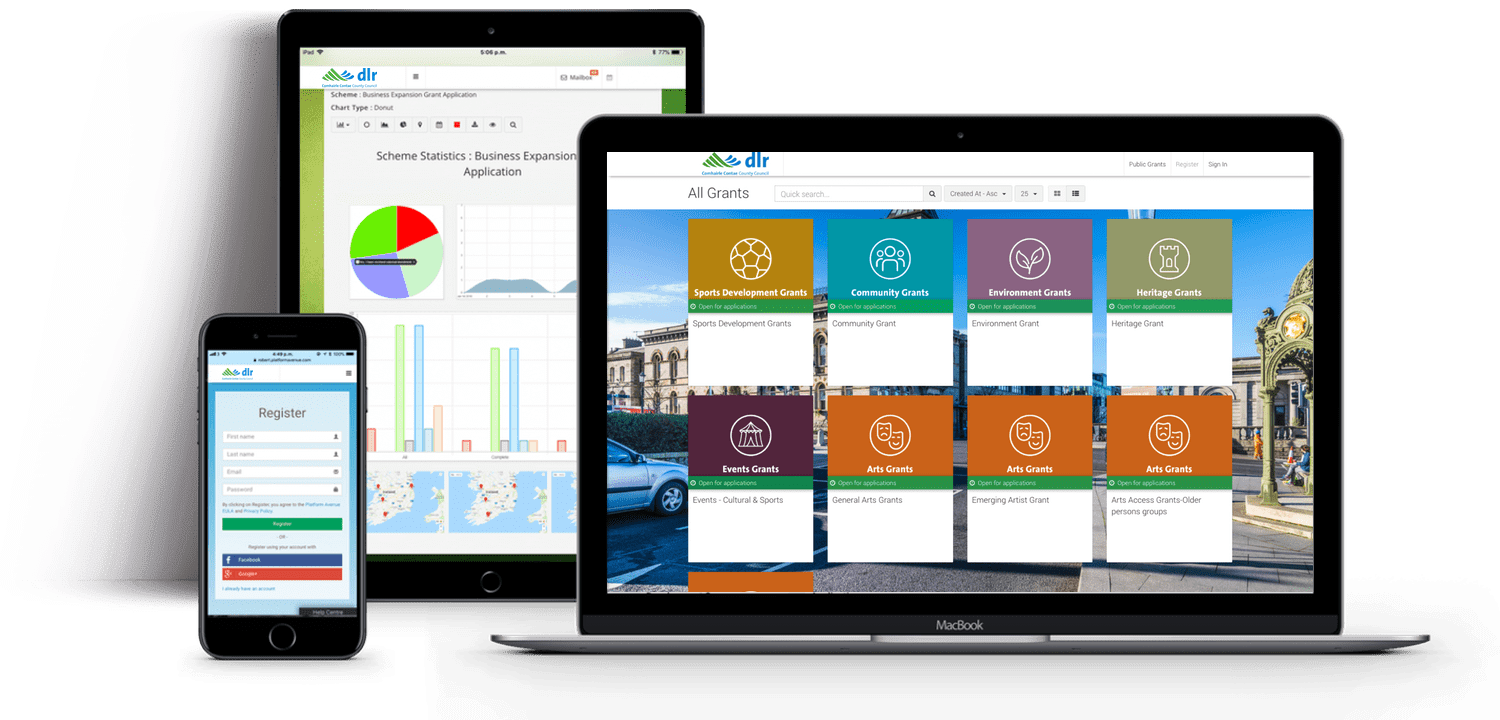
Infographic: Key benefits and efficiency gains from adopting digital grant management platforms.
Improved Applicant Experience
For applicants, transitioning to digital platforms offers a more intuitive, accessible, and transparent experience.
Rather than dealing with printed forms or lengthy PDFs, applicants can now submit proposals through user-friendly online portals — accessible anytime, from anywhere. These platforms let users track application status in real time, receive automated updates, and get notified when action is needed — significantly reducing frustration and uncertainty.
Automation adds another layer of support: clear instructions, pre-set templates, and automatic reminders help applicants stay on track and complete submissions confidently. These systems minimize errors, reduce delays, and boost applicant satisfaction.
Some digital platforms even use personalization tools and analytics to tailor communication — making the process smoother, especially for smaller organizations and first-time applicants.
“The platform’s user-friendly nature, coupled with responsive support, has not only streamlined operations for KHF but also empowered smaller community organizations in the grant application process.”
— Dr. Cliona Hannon, CEO, The Katharine Howard Foundation
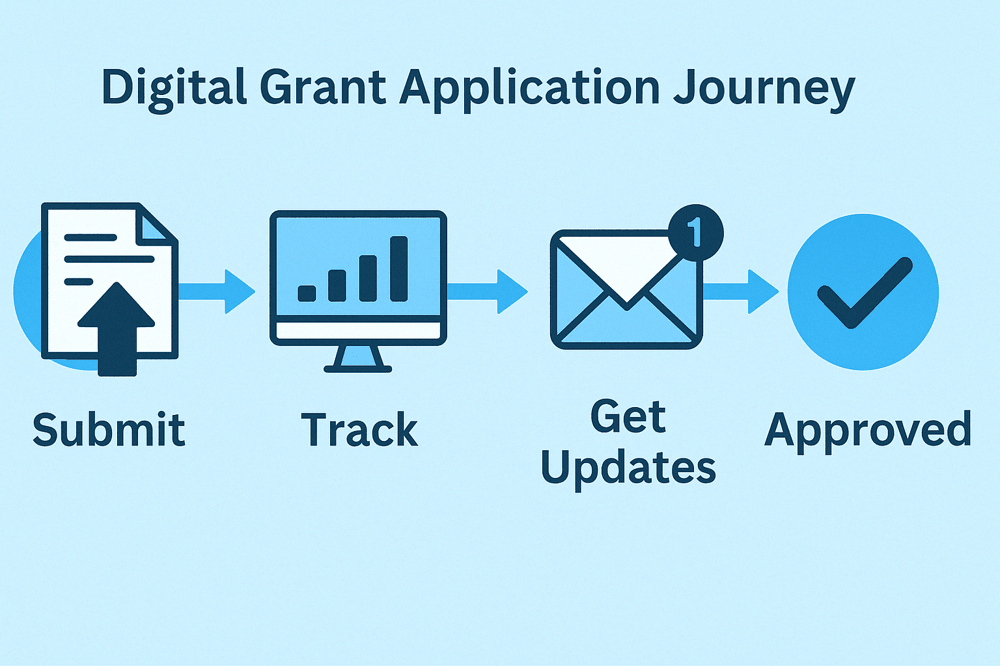
Addressing Data Overload
One of the significant challenges in digitizing grant management is handling large volumes of data. Modern data management tools play a crucial role in streamlining the data collection process, eliminating delays associated with manual entry. Unlike traditional spreadsheets, digital platforms organize data points in a structured, easily searchable manner.
By developing a robust data strategy, organizations can better harness automation capabilities to manage extensive datasets efficiently. Advanced analytics tools swiftly process and interpret data, ensuring integrity and providing actionable insights — allowing local authorities to make informed decisions without being overwhelmed by excessive information.
Moreover, automated archiving and retrieval systems ensure that historical data remains accessible without clutter or confusion. To explore how digital tools can transform your data collection process, visit our Data Collection Software page.
Here’s how one expert describes the value of data analytics in decision-making:
“The key to good decision making is evaluating the available information — the data — and combining it with your own estimates of pluses and minuses. As an economist, I do this every day.”
— Emily Oster, Economics Professor, Brown University
View source
Traditional vs. Digital Data Handling
| Traditional Method | Digital Platform |
|---|---|
| Manual data entry | Automated data capture |
| Disparate spreadsheets | Centralized, integrated database |
| Limited searchability | Advanced search and filtering |
| Time-consuming manual analysis | Real-time analytics and dashboards |
| Risk of loss or duplication | Secure cloud storage |
Mitigating Compliance Risks
As local authorities embrace digital grant management systems, ensuring compliance with regulations and public sector standards becomes a top priority.
Modern tools reduce compliance risks by integrating:
- Automated policy checks and real-time alerts
- Pre-approved templates and workflows aligned with legal requirements
- Comprehensive audit trails to track every action, decision, or change
These features make it easier to stay ahead of non-compliance issues — with built-in reminders that notify teams when deadlines or updates occur.
During the pandemic, several Irish councils that adopted Submit.com reported zero compliance-related fines — thanks to the platform’s structured workflows and real-time tracking.
According to an article by GovTech, automation helps organizations reduce the margin for human error and improves their ability to stay within regulatory frameworks more efficiently.
Traditional vs. Digital Compliance
| Traditional Compliance | Digital Compliance |
|---|---|
| Manual policy tracking | Automated alerts & updates |
| No audit trail | Complete logs of all activity |
| High risk of human error | Pre-built checks and validations |
| Lack of standardization | Templates that meet regulatory standards |
| Greater chance of fines | Real-time notifications reduce violations |
Ensuring Seamless Integration with Legacy Systems
Digital transformation doesn’t mean scrapping everything. The key lies in seamless integration — where new digital platforms align with existing legacy systems.
Many solutions, like Submit.com, offer:
- API connectors and pre-built integrations
- Phased onboarding plans to reduce disruption
- Assisted data migration and system syncing
Here’s a recommended integration flow:
- Assess current systems and data structures
- Prepare and map data for a smooth transition
- Test integrations using API connectors
- Train staff with hybrid tools and user guides
- Go live, optimize, and gather feedback
According to the ICLEI Digitalization Policy Brief, even digitizing parts of operations can cut costs by up to 90%, and countries more advanced in digitalization see up to 20% greater economic benefits.
Common Challenges and Digital Solutions
| Challenge | Solution |
|---|---|
| Legacy system dependency | Gradual onboarding with connectors |
| Manual data transfer risks | Automated migration and validation |
| Staff unfamiliarity | Training, toolkits, and ongoing support |
| System silos | Centralized dashboards and shared access |
| Disruption to daily operations | Phased integration and API testing |
Case Study: Efficient Processes in Action
One shining example of digital grant management in action is the experience of the High Fives Foundation. Tasked with processing applications for over 250 athletes, the organization needed a smarter way to manage its growing volume of requests.
By implementing a cutting-edge digital solution through Submit.com, they streamlined their entire grant process, dramatically improving both staff efficiency and applicant experience.
“A grant application management game changer! Submit allowed us to streamline our grant process while allowing for better control and input from key Board members.”
— Trey Humphrey, Foundation Manager, High Fives Foundation
View Case Study
The shift eliminated time-consuming manual work like reading and sorting through every application. With features like automated scoring, tag-based filtering, and mobile-accessible portals, the Foundation could focus on strategic impact rather than administrative burden.
Even more, collaborative tools enabled Board-level decision-makers to review and weigh in directly through the system — improving teamwork and transparency.
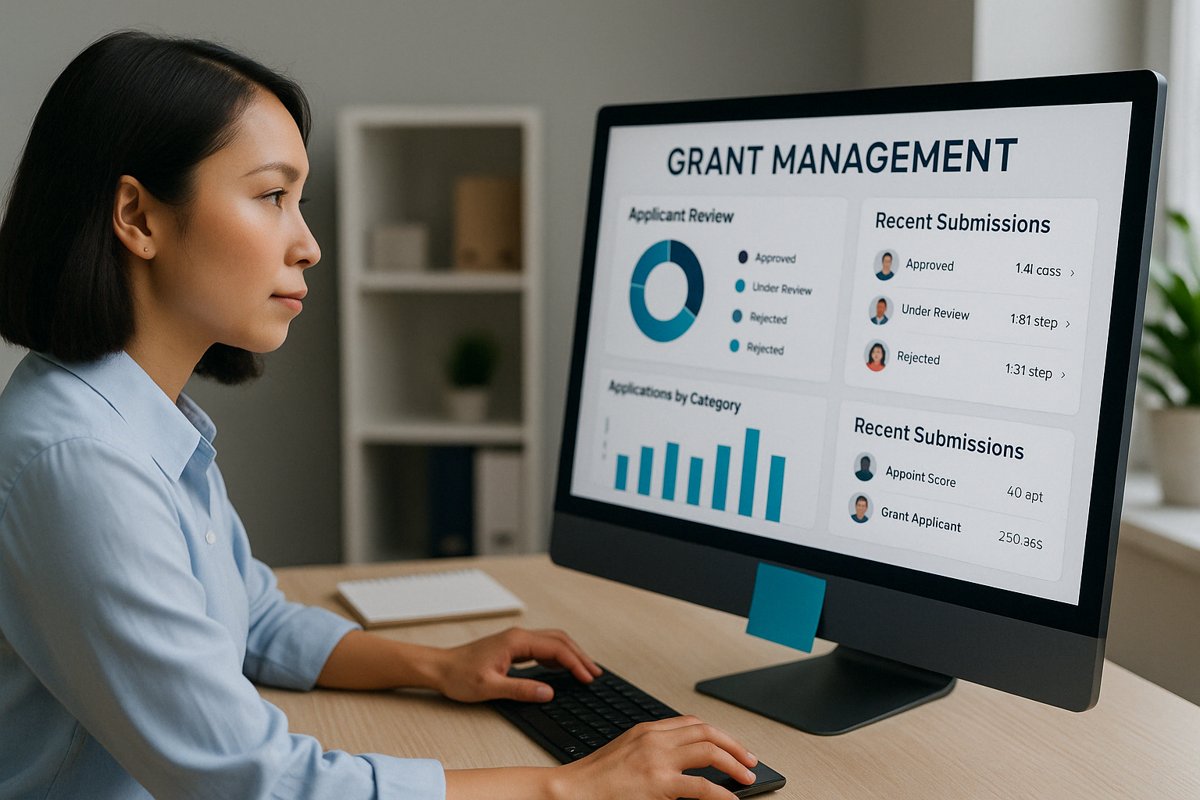
This case underscores the transformative potential of digital systems in modern grantmaking: streamlining processes, improving communication, and aligning grant decisions with organizational priorities.
Pre vs. Post Implementation Snapshot
| Metric | Before Submit | After Submit |
|---|---|---|
| Application Volume | ~150–200 per cycle | 250+ athletes |
| Processing Workflow | Google Forms + spreadsheets | Centralized platform with scoring + tagging |
| Time to Evaluate Applications | Manual review of all entries | Automated scoring & tag-based filtering |
| Staff Collaboration | Informal, siloed | Board-level input via centralized access |
| Applicant Experience | Desktop-only, form-based | Mobile-friendly, smooth and structured UX |
Modernization Sparking Innovation
Digital grant management isn’t just about upgrading existing processes. It enables innovation through predictive analytics, better applicant matching, and proactive funding aligned with community needs. As more local authorities adopt modern tools, their ability to respond to emerging issues improves significantly.
The Future of Grant Management
The future of grant technology is being shaped by powerful innovations. Platforms are becoming smarter, faster, and more user-centric. Authorities are increasingly using:
- AI & machine learning to forecast needs and evaluate grants
- Blockchain to ensure secure and auditable grant processes
- Cloud-based collaboration for remote, real-time teamwork
- User-focused design to make application systems more inclusive
Predictions for Local Authorities
Over the next few years, local authorities will likely integrate digital grant systems as a core part of governance. Expect a shift toward:
- AI-driven insights becoming standard in grant decision-making
- Seamless integrations with legacy systems and public portals
- Mobile-first platforms improving accessibility for all users
- Real-time dashboards enabling better transparency and agility
Long-Term Strategic Impact
The long-term benefits of digital grant management are strategic in nature. Local governments can improve efficiency, reduce redundancy, and direct funding toward measurable outcomes. These systems empower data-informed policy decisions, build public trust through transparency, and help ensure equitable access to opportunities.
What Are the Risks of Not Going Digital?
Manual systems come with significant downsides. Without digital transformation, local authorities face:
- Longer application processing times
- Greater risk of errors in data and documentation
- Limited visibility and tracking during audits
- Difficulty scaling or adjusting to new policies and demand
How Can Authorities Ensure Data Security?
Data protection is critical when digitizing public systems. Authorities should follow industry-standard best practices such as:
- Secure cloud hosting with encryption at rest and in transit
- Access control through role-based permissions
- Regular data backups with disaster recovery protocols
- Staff training on cybersecurity and data handling policies
FAQs
How does digital grant management save time?
Automation reduces time spent on repetitive admin tasks like data entry, follow-ups, and file organization. With templates, auto-reminders, and centralized dashboards, grant cycles are completed faster and with fewer errors.
What are the risks of not adopting digital solutions?
Without digital systems, local authorities risk inefficiencies, delays, compliance issues, and reduced visibility. It can also impact public confidence due to inconsistent communication and tracking.
How can authorities ensure data security during the transition?
A combination of cloud security, staff training, and robust compliance policies will ensure that sensitive grant data remains safe throughout digital adoption.
Ready to Streamline Your Grant Management?
Discover how Submit can help your team digitize workflows, reduce processing times, and deliver better outcomes — all in one intuitive platform.

